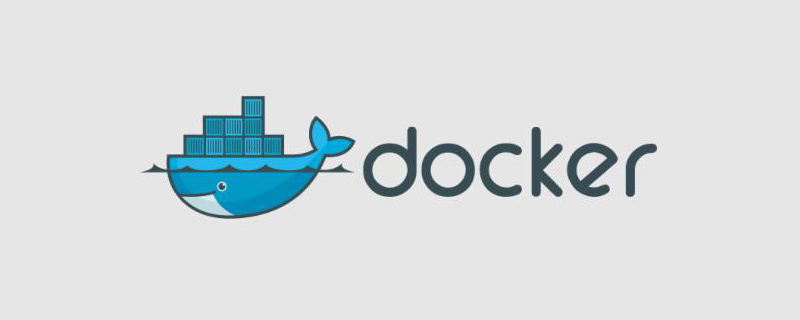The editor below will share with you an article on how to use ob_start() in PHP to clear output and selective output. It has a good reference and value for learning PHP. I hope it will be helpful to everyone. If you are interested in PHP, please follow the editor to take a look.
1. Background
There is a piece of code because the encapsulated method is called , so there will be some return values that are not needed. How to deal with these return values to make them disappear. Some people will say, wouldn't it be better to clear the variables? But what if this return value cannot be cleared?
2. ob_start()
1. Concept:
This function will open the output buffer. When output buffering is activated, the script will not output content (except http headers), instead the content to be output is stored in an internal buffer.
The contents of the internal buffer can be copied to a string variable using the ob_get_contents() function. To output the contents stored in the internal buffer, you can use the ob_end_flush() function. In addition, using the ob_end_clean() function will silently discard the contents of the buffer.
From php manual: http://www.php.cn/course/25.html
2. Basic usage of buffer
//打开缓冲区 ob_start(); //清除缓冲区中的内容 ob_clean(); //冲刷出(送出)输出缓冲区内容并关闭缓冲 ob_end_flush();
3. Basic test
1,
echo '1'; ob_start(); echo '2'; ob_clean();
Result: 1
Explanation: This is the simplest usage, that is, add ob_start(); to the outside that does not want to output content, and then clear the content in the buffer, thus realizing our usage scenario. We can selectively output what we want to output. Get rid of what you don't want to output.
2,
echo '1'; ob_start(); echo '2'; //输出缓冲区 ob_end_flush();
Result: 12
3,
//打开缓冲区 ob_start(); echo '1'; //清除缓冲区,此时不会输出1 ob_clean(); //输出缓冲区。但是因为上面已经清除过缓冲区了,所以不会输出 1 ob_end_flush(); echo '2';
Result: 2
4,
ob_start(); //打开缓冲区 echo '1'; $a = ob_get_contents(); //输出缓冲区内容到$a,相当于赋值给$a ob_clean(); //这里清除缓冲区内容 echo '2'; //输出2 echo $a; //输出$a
Result: 2 1
Explanation: ob_get_contents(); here is to obtain the contents of the buffer. We can assign the obtained content to a variable, so that even if the buffer is cleared and we output the variable, we can still output 1 normally.
4. Commonly used places
This function is commonly used for page staticization. It can play a key role in constructing a micro web framework. The rendered page is directly written to a file through the input cache. In this way, it can be judged whether the file exists to determine whether the user needs to re-render a page during this visit. It can also be applied to large projects and use nosql to store it. The specific usage of the rendered page varies from person to person, it depends on which one you like
The above is a simple test I did myself. If necessary, you can refer to the PHP manual and do more tests.
Related recommendations:
php bubble sort array sorting method from small to large
How to implement sequential printing of binary trees in PHP
The above is the detailed content of PHP uses ob_start() to clear output and selective output. For more information, please follow other related articles on the PHP Chinese website!
 php怎么把负数转为正整数Apr 19, 2022 pm 08:59 PM
php怎么把负数转为正整数Apr 19, 2022 pm 08:59 PMphp把负数转为正整数的方法:1、使用abs()函数将负数转为正数,使用intval()函数对正数取整,转为正整数,语法“intval(abs($number))”;2、利用“~”位运算符将负数取反加一,语法“~$number + 1”。
 docker start起不来怎么办Oct 21, 2022 pm 03:43 PM
docker start起不来怎么办Oct 21, 2022 pm 03:43 PMdocker start起不来的解决办法:1、检查运行状态,然后通过“echo 3 > /proc/sys/vm/drop_caches”命令释放被占用的内存;2、通过“$netstat -nltp|grep ...”命令检查端口是否已经被占用,如果上线后发现占有,则改为可用端口再重启即可。
 php怎么实现几秒后执行一个函数Apr 24, 2022 pm 01:12 PM
php怎么实现几秒后执行一个函数Apr 24, 2022 pm 01:12 PM实现方法:1、使用“sleep(延迟秒数)”语句,可延迟执行函数若干秒;2、使用“time_nanosleep(延迟秒数,延迟纳秒数)”语句,可延迟执行函数若干秒和纳秒;3、使用“time_sleep_until(time()+7)”语句。
 php怎么除以100保留两位小数Apr 22, 2022 pm 06:23 PM
php怎么除以100保留两位小数Apr 22, 2022 pm 06:23 PMphp除以100保留两位小数的方法:1、利用“/”运算符进行除法运算,语法“数值 / 100”;2、使用“number_format(除法结果, 2)”或“sprintf("%.2f",除法结果)”语句进行四舍五入的处理值,并保留两位小数。
 php怎么根据年月日判断是一年的第几天Apr 22, 2022 pm 05:02 PM
php怎么根据年月日判断是一年的第几天Apr 22, 2022 pm 05:02 PM判断方法:1、使用“strtotime("年-月-日")”语句将给定的年月日转换为时间戳格式;2、用“date("z",时间戳)+1”语句计算指定时间戳是一年的第几天。date()返回的天数是从0开始计算的,因此真实天数需要在此基础上加1。
 php怎么判断有没有小数点Apr 20, 2022 pm 08:12 PM
php怎么判断有没有小数点Apr 20, 2022 pm 08:12 PMphp判断有没有小数点的方法:1、使用“strpos(数字字符串,'.')”语法,如果返回小数点在字符串中第一次出现的位置,则有小数点;2、使用“strrpos(数字字符串,'.')”语句,如果返回小数点在字符串中最后一次出现的位置,则有。
 php怎么替换nbsp空格符Apr 24, 2022 pm 02:55 PM
php怎么替换nbsp空格符Apr 24, 2022 pm 02:55 PM方法:1、用“str_replace(" ","其他字符",$str)”语句,可将nbsp符替换为其他字符;2、用“preg_replace("/(\s|\ \;||\xc2\xa0)/","其他字符",$str)”语句。
 php字符串有没有下标Apr 24, 2022 am 11:49 AM
php字符串有没有下标Apr 24, 2022 am 11:49 AMphp字符串有下标。在PHP中,下标不仅可以应用于数组和对象,还可应用于字符串,利用字符串的下标和中括号“[]”可以访问指定索引位置的字符,并对该字符进行读写,语法“字符串名[下标值]”;字符串的下标值(索引值)只能是整数类型,起始值为0。


Hot AI Tools

Undresser.AI Undress
AI-powered app for creating realistic nude photos

AI Clothes Remover
Online AI tool for removing clothes from photos.

Undress AI Tool
Undress images for free

Clothoff.io
AI clothes remover

AI Hentai Generator
Generate AI Hentai for free.

Hot Article

Hot Tools

Safe Exam Browser
Safe Exam Browser is a secure browser environment for taking online exams securely. This software turns any computer into a secure workstation. It controls access to any utility and prevents students from using unauthorized resources.

ZendStudio 13.5.1 Mac
Powerful PHP integrated development environment

SublimeText3 English version
Recommended: Win version, supports code prompts!

Zend Studio 13.0.1
Powerful PHP integrated development environment

Dreamweaver CS6
Visual web development tools






